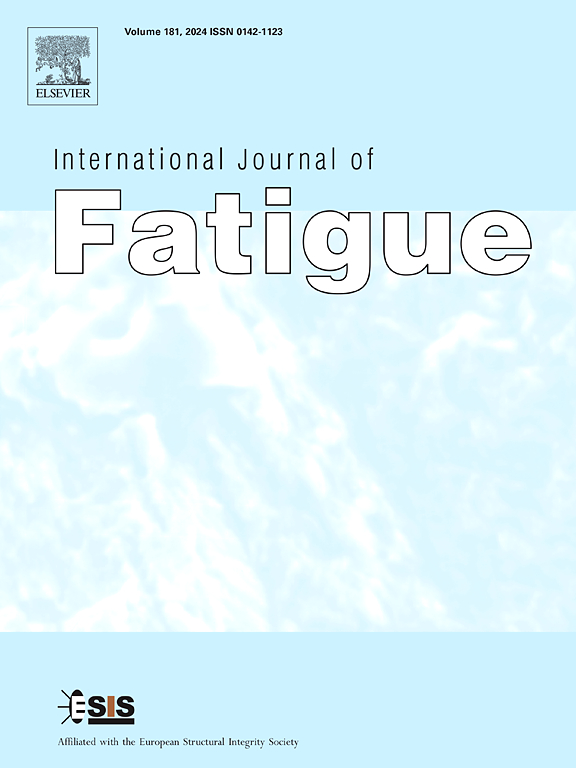A computational framework for predicting the effect of surface roughness in fatigue
IF 5.7
2区 材料科学
Q1 ENGINEERING, MECHANICAL
引用次数: 0
Abstract
Surface roughness is a critical factor influencing the fatigue life of structural components. Its effect is commonly quantified using a correction coefficient known as the surface factor. In this paper, a phase field based numerical framework is proposed to estimate the surface factor while accounting for the stochastic nature of surface roughness. The model is validated against existing experimental data. Furthermore, we investigate the influence of key parameters on the fatigue life of rough surfaces, such as surface topology and failure strength. An important effect of surface roughness is observed when the average surface roughness increases and the correlation length of the surface profile decreases. This effect becomes more pronounced with higher failure strengths.
预测疲劳中表面粗糙度影响的计算框架
表面粗糙度是影响结构件疲劳寿命的重要因素。它的影响通常用一种称为表面因子的修正系数来量化。考虑到表面粗糙度的随机性,提出了一种基于相场的数值框架来估计表面因子。根据已有的实验数据对模型进行了验证。此外,我们还研究了表面拓扑结构和失效强度等关键参数对粗糙表面疲劳寿命的影响。当平均表面粗糙度增大而表面轮廓的相关长度减小时,表面粗糙度会产生重要的影响。这种效应在更高的失效强度下变得更加明显。
本文章由计算机程序翻译,如有差异,请以英文原文为准。
求助全文
约1分钟内获得全文
求助全文
来源期刊

International Journal of Fatigue
工程技术-材料科学:综合
CiteScore
10.70
自引率
21.70%
发文量
619
审稿时长
58 days
期刊介绍:
Typical subjects discussed in International Journal of Fatigue address:
Novel fatigue testing and characterization methods (new kinds of fatigue tests, critical evaluation of existing methods, in situ measurement of fatigue degradation, non-contact field measurements)
Multiaxial fatigue and complex loading effects of materials and structures, exploring state-of-the-art concepts in degradation under cyclic loading
Fatigue in the very high cycle regime, including failure mode transitions from surface to subsurface, effects of surface treatment, processing, and loading conditions
Modeling (including degradation processes and related driving forces, multiscale/multi-resolution methods, computational hierarchical and concurrent methods for coupled component and material responses, novel methods for notch root analysis, fracture mechanics, damage mechanics, crack growth kinetics, life prediction and durability, and prediction of stochastic fatigue behavior reflecting microstructure and service conditions)
Models for early stages of fatigue crack formation and growth that explicitly consider microstructure and relevant materials science aspects
Understanding the influence or manufacturing and processing route on fatigue degradation, and embedding this understanding in more predictive schemes for mitigation and design against fatigue
Prognosis and damage state awareness (including sensors, monitoring, methodology, interactive control, accelerated methods, data interpretation)
Applications of technologies associated with fatigue and their implications for structural integrity and reliability. This includes issues related to design, operation and maintenance, i.e., life cycle engineering
Smart materials and structures that can sense and mitigate fatigue degradation
Fatigue of devices and structures at small scales, including effects of process route and surfaces/interfaces.
 求助内容:
求助内容: 应助结果提醒方式:
应助结果提醒方式:


